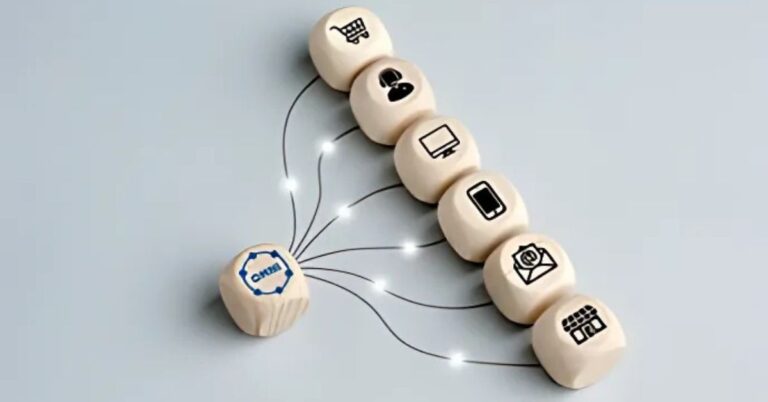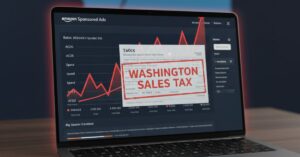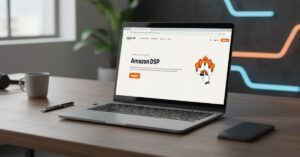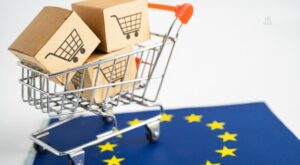
True omnichannel loyalty in ecommerce goes beyond just rewarding purchases; it involves unifying customer data across all platforms to create one seamless and consistent brand experience.
Today’s customers don’t just shop on one channel, they move seamlessly between a brand’s website, mobile app, and social media pages. They expect a consistent and personalized experience at every turn.
The most successful ecommerce brands meet this demand with robust omnichannel loyalty programs. The impact is undeniable, as businesses with strong omnichannel engagement retain 89% of their customers, compared to just 33% for those without.
Here, we examine the key components of building an effective omnichannel loyalty strategy that will keep your customers coming back.
How Omnichannel Loyalty Is Reshaping E-commerce Retention in 2025
GenesisX"Zara, a global fast fashion retail brand, saw a 74% increase in online sales after adopting an omnichannel approach."
An omnichannel loyalty program rewards customers consistently across every sales channel, whether online, on a mobile app, or via social media. For brands selling on multiple platforms, integrating the marketplace into a broader strategy often requires the expertise of an Amazon agency to ensure a cohesive experience. This overall strategy shifts the focus from merely encouraging transactions to building deeper customer engagement.
Modern loyalty initiatives are more interactive and convenient than traditional point systems. They aim to develop lasting relationships by making valued customers feel recognized at every touchpoint. This approach allows for greater personalization, as retailers can use data from all channels to tailor the customer experience.
According to a 2025 guide from Shopify, the core benefits of this strategy give businesses a significant competitive advantage. It allows companies to better match the customer experience with shopper expectations and capture more relevant data.
An effective program provides a superior digital experience by using customer data to deliver personalized content. It also unifies customer information to provide a complete view of a shopper’s activity.
This comprehensive data includes key details such as:
- Customer purchasing habits and buying frequency.
- Preferred shopping channels and point usage rates.
- Demographics, location, and general customer behaviors.
Executing an omnichannel program offers greater purchasing flexibility and provides more analytics for business owners. These added touchpoints help create better connections with new and existing customers.
To create a successful program, businesses can follow a clear, five-step process. This ensures both the operational backend and the customer-facing experience are smooth and effective.
Choose a Unified Commerce Platform
A unified platform is the essential foundation, bringing all backend systems into one solution to avoid technical issues. It ensures that customer rewards and profiles are updated in real-time across all channels.Select a Loyalty App Partner
Specialized loyalty apps integrate with ecommerce and marketing tools to manage the program. These apps offer customizable dashboards and features to display point balances and rewards.Define Loyalty Tiers and Rewards
Businesses must decide what actions to incentivize, from purchases to non-transactional engagements like social media follows or referrals. Rewards can range from cash-value points to exclusive perks like free shipping, birthday gifts, or early access to new products.Promote the Loyalty Program
After testing the system to ensure it works flawlessly, the program must be actively promoted. This can be done through in-store signage, QR codes on receipts, or automated email invitations.Use Customer Data for Personalization
The final step is to analyze the collected data to personalize outreach and offers. This allows for targeted marketing strategies, such as offering specific promotions based on a customer’s order history or shopping preferences.
Emotional Connection and Technology Redefine Customer Loyalty
The foundation of customer loyalty has fundamentally changed, moving far beyond traditional points-based reward systems. In 2025, the brands achieving the most significant results are the ones that understand this transformation.
An article from Brand Movers highlights that emotional loyalty is now the primary driver of repeat business. This connection-based approach can generate 65% more repeat purchases than legacy programs that only reward transactions.
Consumers now see their purchases as an extension of their identity and values. Lasting loyalty is built when a brand’s principles align with a customer’s own self-perception.
Several key forces are reshaping how customers make loyalty decisions in the current market. These shifts are rooted in changing consumer behaviors and new definitions of value.
Modern shoppers have expanded their idea of value beyond price and quality. The new value equation now includes:
- Convenience and the time saved during a transaction.
- Reduced stress and a frictionless shopping experience.
- Authentic brand experiences that foster a real connection.
Technology is also playing an essential role in transforming loyalty programs from simple reward mechanisms into sophisticated engagement tools. The most effective technologies are those that deliver genuine personalization and add tangible value.
- AI-Powered Personalization
Artificial intelligence is now critical for analyzing customer data to create truly individual experiences. AI-driven programs are seeing 40% higher member engagement and 38% better retention rates. - Blockchain Technology
Loyalty programs using blockchain report a 35% higher perceived value from members. This is because tokenized points offer greater flexibility, allowing customers to trade or convert them. - Immersive Experiences
Augmented and virtual reality have become powerful loyalty drivers that create memorable brand interactions. Program members who use AR features have shown a 27% higher repeat purchase rate.
Despite technological advances, human connection remains the most important piece of lasting loyalty. Technology should be used to enhance these relationships, not replace them.
Community-driven loyalty programs create powerful social bonds that make it difficult for customers to switch to competitors. Customers who participate in brand communities have demonstrated 37% higher retention rates and a 26% higher lifetime value.
Hyper-personalization has moved from a competitive advantage to a basic expectation. The most successful programs achieve this through advanced data strategies like the use of zero-party data, which is information customers share intentionally.
The customer journey now spans multiple devices and channels, making a seamless experience essential. An integrated omnichannel loyalty program that maintains context and personalization is critical for success.
Curbside Pickup Drives Highest Conversion Rates Among Omnichannel Features
A key part of delivering this enhanced customer value and a frictionless experience comes from practical services, and new data pinpoints exactly which omnichannel feature delivers the highest returns.
While a variety of omnichannel services are associated with higher sales, one particular feature stands out for its significant impact on conversion rates. For online retailers with physical stores, offering curbside pickup is proving to be the most effective option.
A 2024 analysis from Digital Commerce 360 compared the performance of retail chains offering different omnichannel services. The report found that retailers providing curbside pickup achieved the highest average conversion rates.
These retailers saw conversion rates that were considerably higher than other popular omnichannel options. The data shows a clear hierarchy of performance.
- Curbside Pickup- Retailers offering this service had an average conversion rate of 3.9%.
- Buy Online, Pick Up in Store (BOPIS) – This feature was associated with a 3.4% conversion rate.
- In-Store Stock Status – Displaying store inventory online led to a 3.3% conversion rate.
For comparison, the average conversion rate for top online retailers without these specific omnichannel features was just 3.1%. This highlights the clear advantage held by companies that have mastered convenient pickup options.
The adoption of curbside pickup has fluctuated, peaking at 55.1% of retail chains in 2020 before settling at 24.8% in 2024. However, the retailers who continued to offer the service have successfully unlocked its value for customers who prioritize convenience.
This feature has become a mainstay for specific retail sectors where speed and ease are paramount. The Food & Beverage and Office Supplies categories lead in offering curbside pickup, with 50% of chains in each sector providing the service.
Major retailers like Walmart, Target, Albertsons, and Kroger have successfully integrated curbside pickup into their operations. It has become a key part of building relationships with consumers and securing their role in household restocking cycles.
Uniform Market"Omnichannel shoppers, who engage with a business across multiple channels, also exhibit a 30% higher lifetime value compared to single-channel shoppers."






